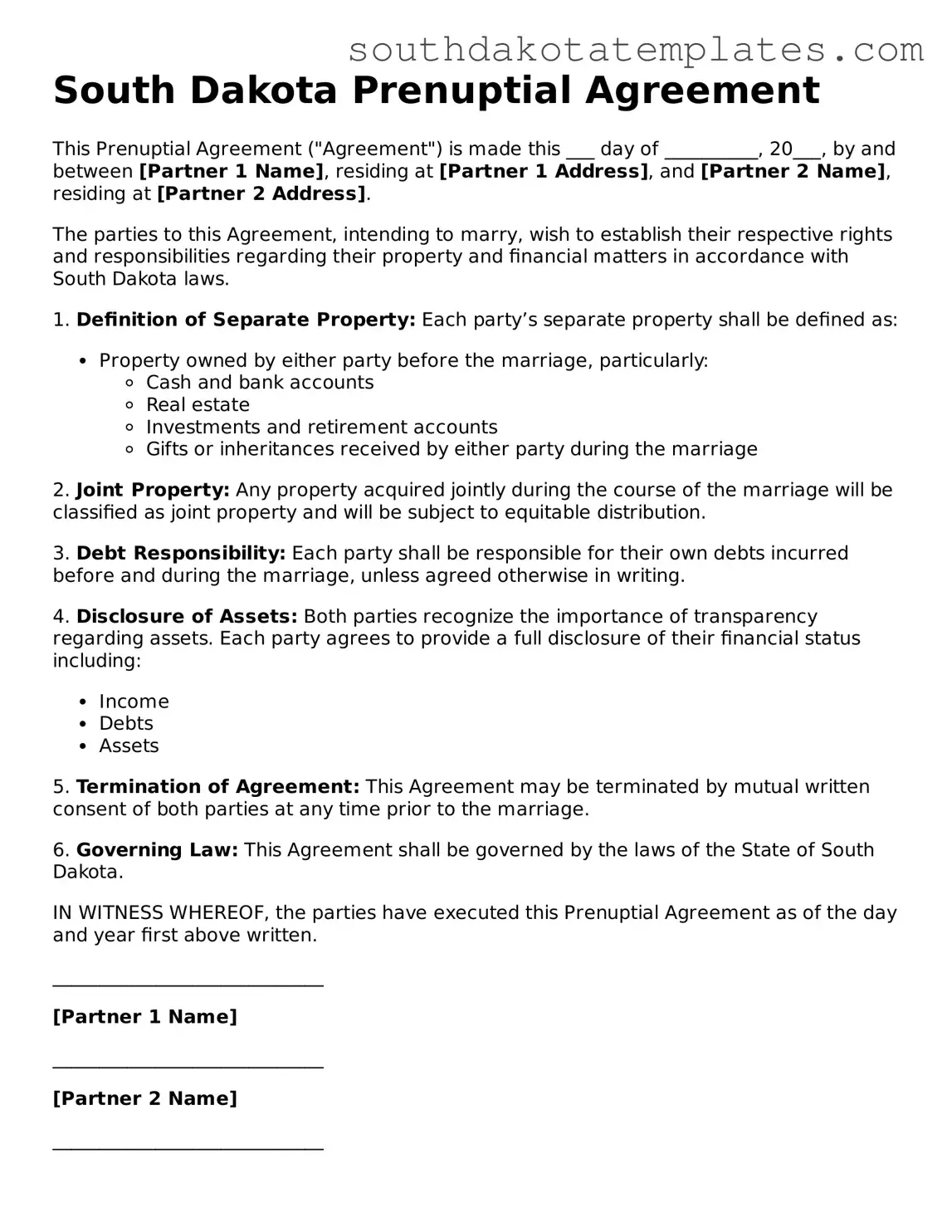Free South Dakota Prenuptial Agreement Document
A South Dakota Prenuptial Agreement form is a legal document that couples use to outline the division of assets and responsibilities in the event of a divorce or separation. This agreement helps protect individual interests and clarifies financial expectations before marriage. By preparing this form, couples can foster open communication and build a solid foundation for their future together.
Ready to take the next step? Fill out the Prenuptial Agreement form by clicking the button below.
Get Prenuptial Agreement
